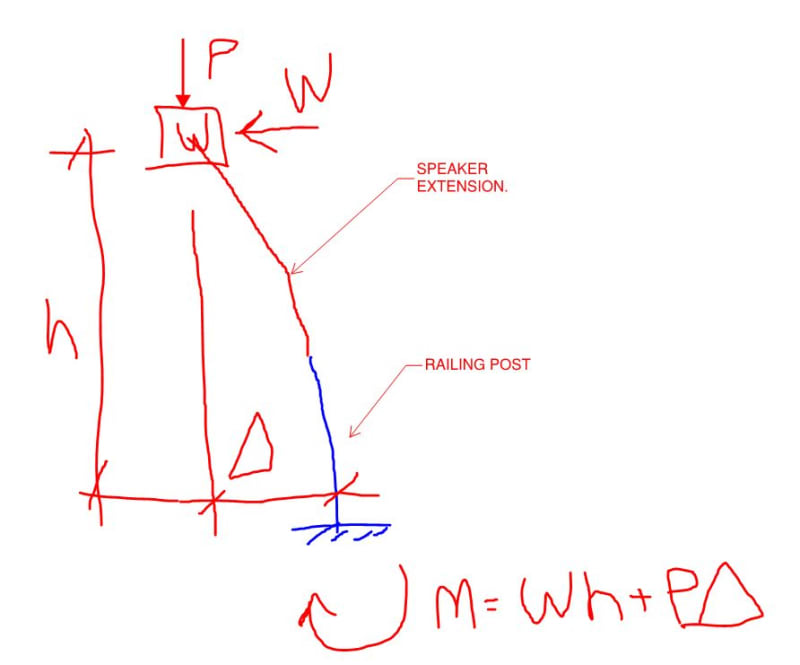rsbmusicguy
Structural
I ran into something the other day and unfortunately don't have access to my physics book right now...
I am doing an analysis on a post where they installed a new speaker system to a railing post. The speaker is very high in the air (big lever arm) and therefore when you push against the post this engages the weight of the speaker above and causes the railing to deflect more than it should.
The additional deflection in the post is a function of the speaker's interia? When I push the post the force transfers to the speaker above which gains interia. This additional force to counteract the inertia is the extra force I need to calculate?
Again, wish I had my physics book handy!
RSB
I am doing an analysis on a post where they installed a new speaker system to a railing post. The speaker is very high in the air (big lever arm) and therefore when you push against the post this engages the weight of the speaker above and causes the railing to deflect more than it should.
The additional deflection in the post is a function of the speaker's interia? When I push the post the force transfers to the speaker above which gains interia. This additional force to counteract the inertia is the extra force I need to calculate?
Again, wish I had my physics book handy!
RSB

